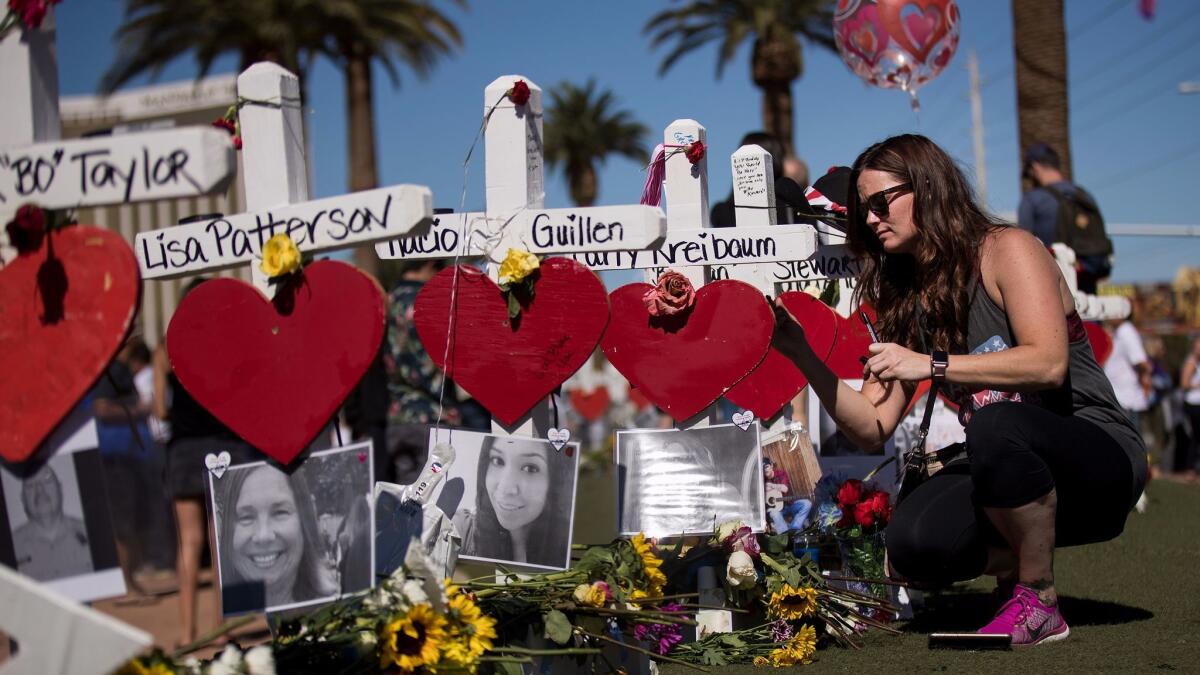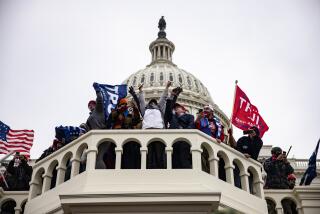Column: If you think mass shootings are becoming more frequent, and worse — you’re right

- Share via
These days, it seems as if mass shootings in the U.S. are occurring with increasing frequency and producing ever higher death tolls.
Did we say “seems”? Actually, that impression is the truth. William P. Gardner has compiled the data in graph form, and they show a distinct increase in the frequency of mass killings — or, to put it another way, a steady decrease in the number of days between mass shootings.
Gardner is an epidemiologist at the University of Ottawa who blogs frequently at the Incidental Economist, an indispensable health policy website. He based his most recent post there on a roster of mass shootings produced by my colleagues here at The Times on Oct. 2, the day after the Las Vegas massacre, which took the lives of 58 spectators at a country music festival and injured more than 500 others.
I thought we just seem to have gotten hardened to these things happening every so often....They’re not happening every so often, [but] more and more often.
— William P. Gardner, University of Ottawa
Gardner updated the record with two subsequent events, the Sutherland Springs, Texas, killings of 26 churchgoers on Nov. 5, which was 35 days after Las Vegas, and the rampage that took the lives of six in Rancho Tehama, Calif., on Nov. 13, only eight days after the previous mass shooting.
“At first I thought we just seem to have gotten hardened to these things happening every so often,” Gardner told me. “And then I plotted the data, and found they’re not happening every so often, they’re happening more and more often, and they’re bigger and bigger events. It seems to me that’s not sustainable.”
Gardner’s analysis of episodes since 1984 underscores that most mass shootings (which experts generally define as incidents with four or more casualties) involve five to 19 deaths. But there is also “a series of ultra casualty events,” he wrote in October, shortly after Las Vegas. “The death rate in these massacres has almost tripled since 2000.”
The reason for the increasing toll isn’t hard to divine: It’s the increasing sophistication of the weapons in the hands of perpetrators. “Readily available high-powered modern weaponry makes mass killing easy for a determined killer, even an inexperienced one,” the editors of the New England Journal of Medicine, led by Executive Editor Edward W. Campion, wrote on Oct. 4. Their prescription for “the prevention of future mass killings” was to “begin with making it far more difficult to obtain semiautomatic firearms, especially ones that can be easily converted into automatic weapons.”
Gardner also is concerned about the easy availability of lethal technology: “Modern small arms are highly lethal, portable, and affordable,” he writes. “Modern weapons are so effective that a single armed man targeting a crowd can inflict casualty rates that are reminiscent of the Battle of the Somme, rather than a bar fight.”
But he’s also concerned about how the rise in mass shootings will affect the way we live our lives. “At some point, continued increases in the frequency and scale of mass shootings become incompatible with ordinary civic life,” he wrote.
“Either we’re going to have to start doing something to prevent this,” he told me, “or we’re going to have to turn our public spaces into high-defense camps. Are all public spaces going to have to be under surveillance? Are we going to do facial recognition of everyone going down every street? That seems like a real dystopian future.”
One aspect of the culture of gun violence that Americans do seem to become hardened to is inaction by the political establishment. When Congress failed to outlaw weapons of mass killing following the murders of 20 6- and 7-year-old children at Sandy Hook Elementary School in 2012, the question became what level of violence would lead to legislation. But in the aftermath of the Las Vegas massacre, even the nascent desire in Congress to ban “bump stocks,” a modification that allowed Stephen Paddock to spray the music festival with rapid fire, already appears to have faded.
Gardner’s data graphs suggest that at least one more mass killing by gunfire is due in the U.S. before the end of the year. The chances are low it will lead to more firearms regulation, when the previous wave has not.
Keep up to date with Michael Hiltzik. Follow @hiltzikm on Twitter, see his Facebook page, or email michael.hiltzik@latimes.com.
Return to Michael Hiltzik’s blog.
More to Read
Sign up for Essential California
The most important California stories and recommendations in your inbox every morning.
You may occasionally receive promotional content from the Los Angeles Times.














